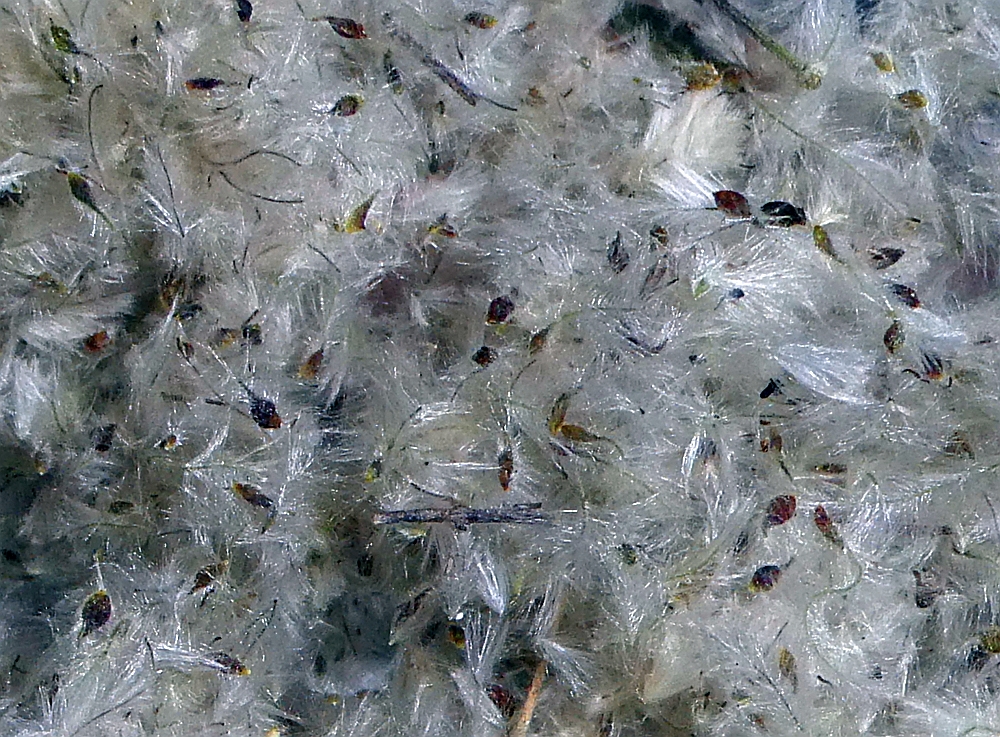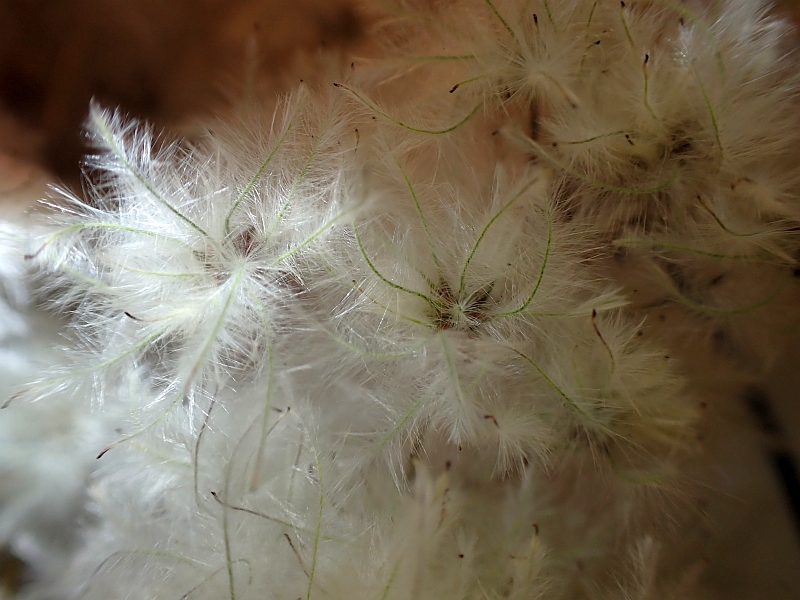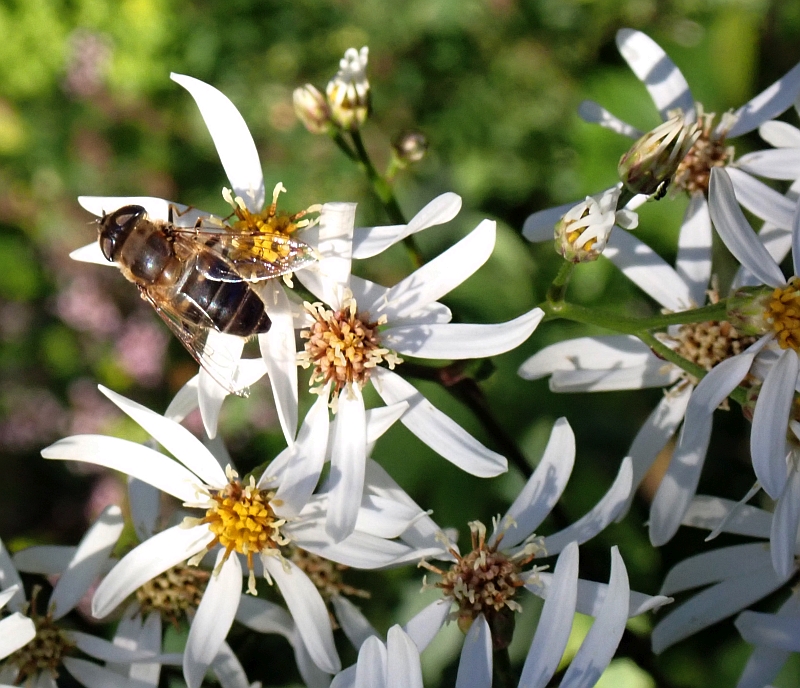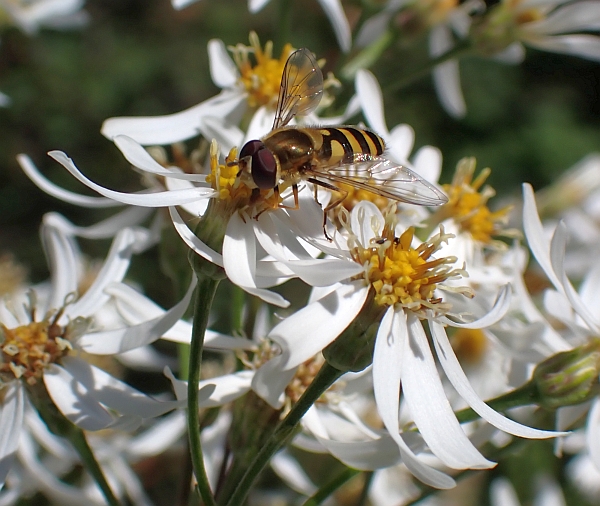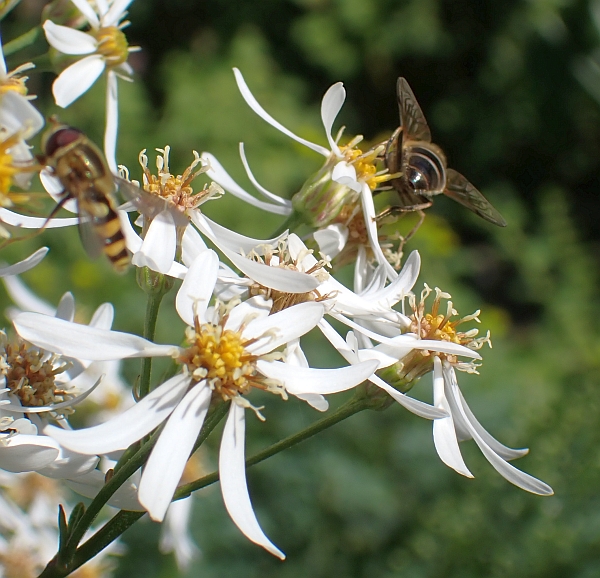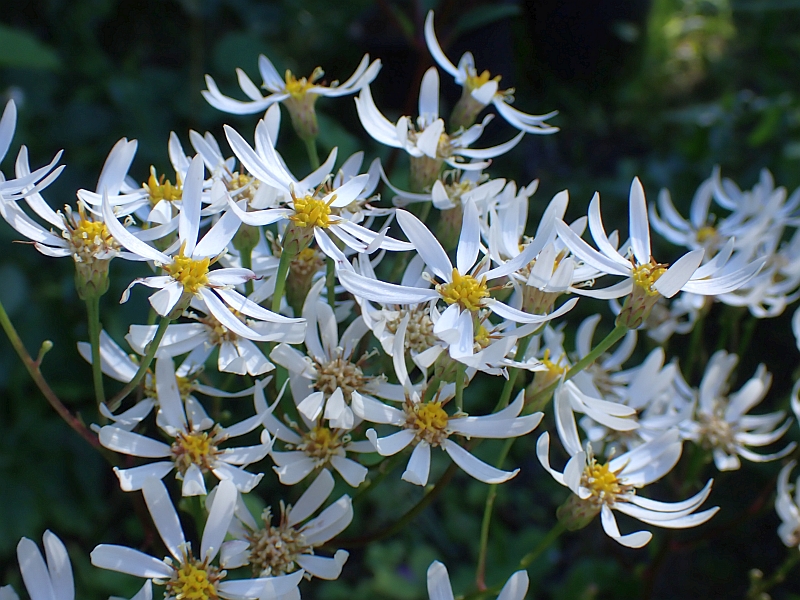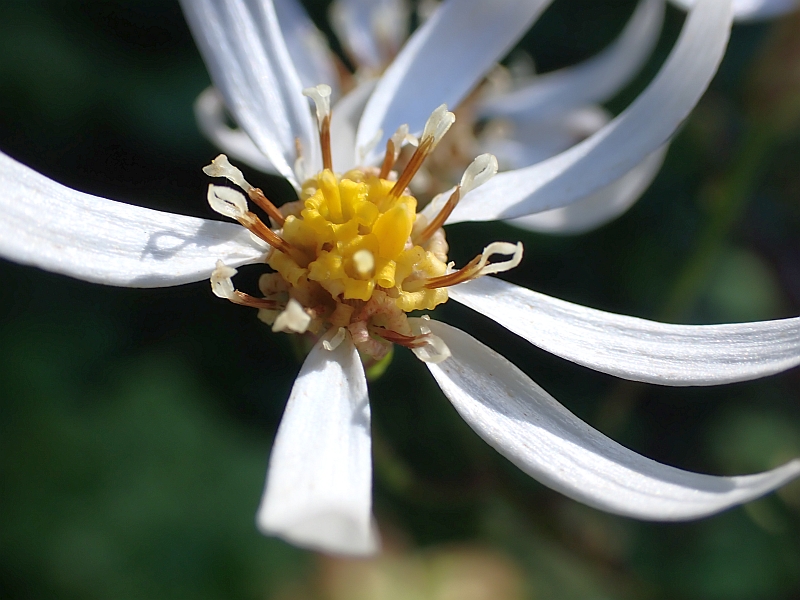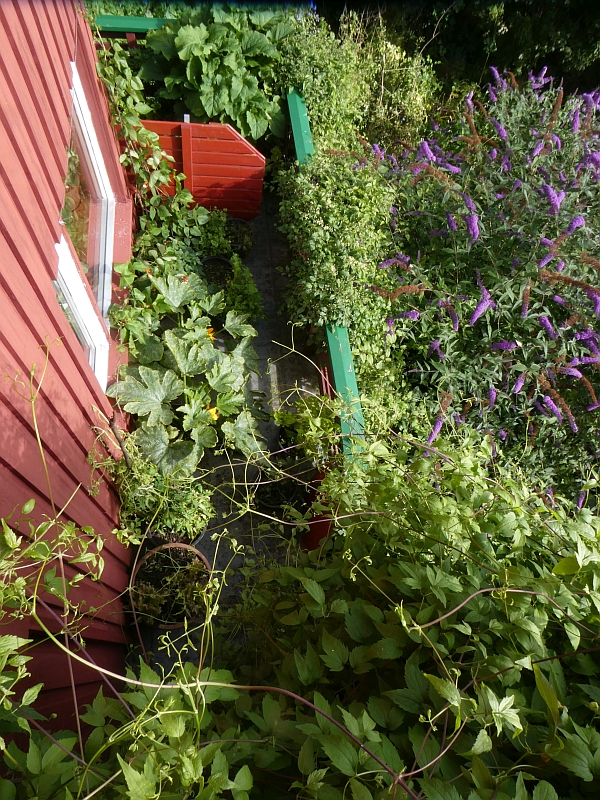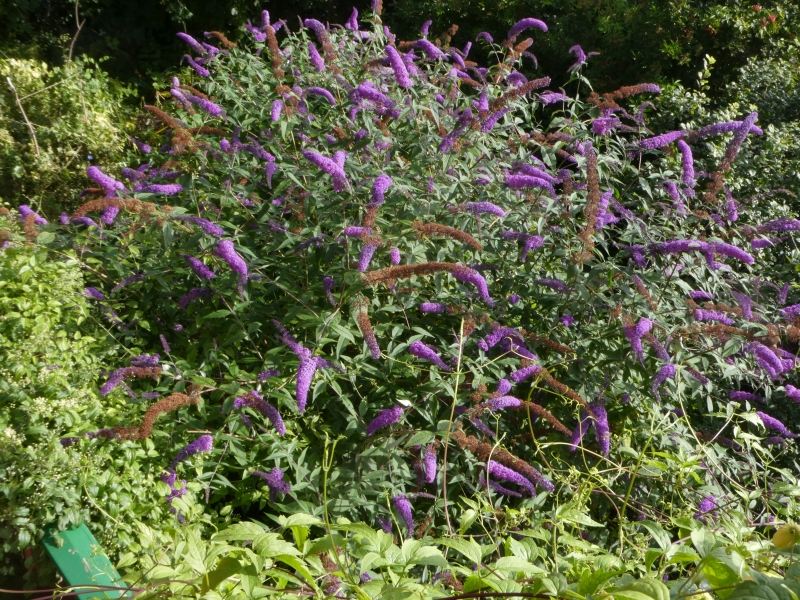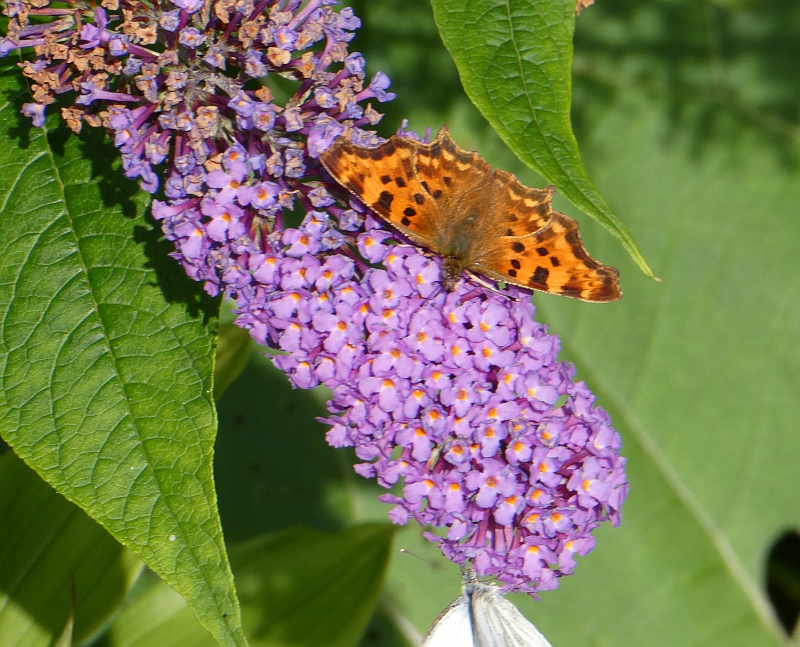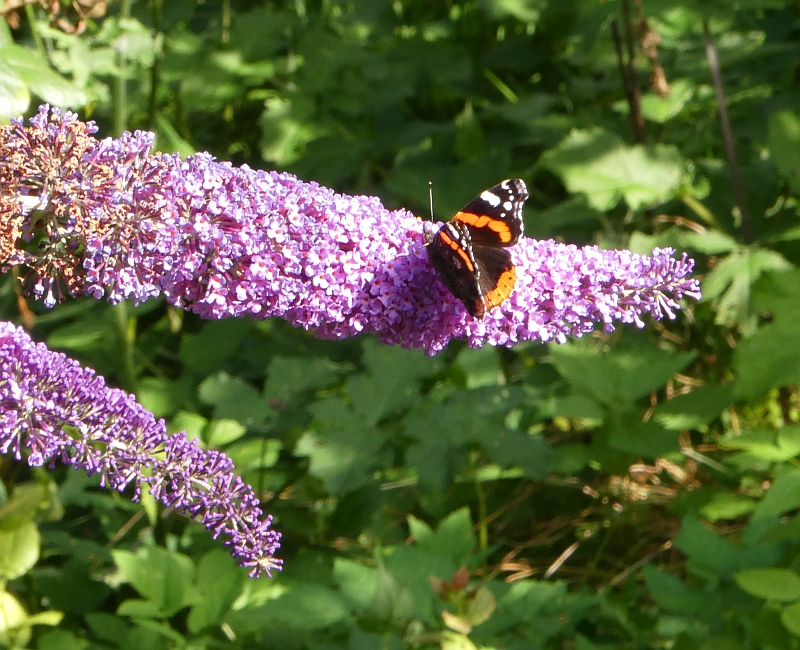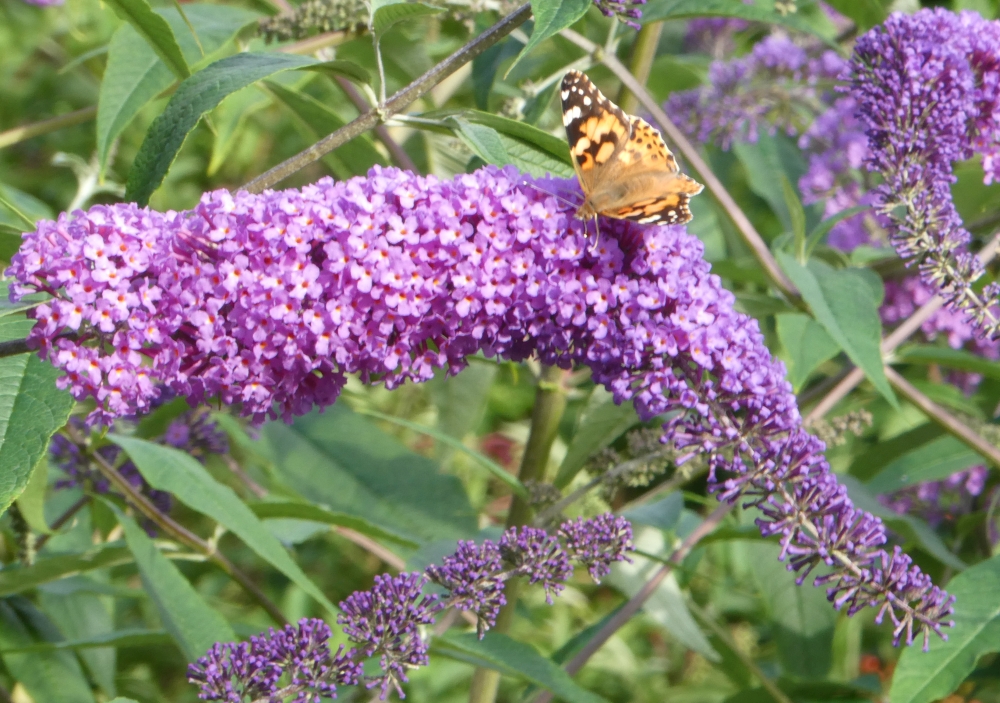Growing your own seed often has a positive impact on pollinating insects as here with a female orange tip butterfly (aurorasommerfugl) sitting on flowers of mustard greens / sennepsalat “Giant Red” (Brassica juncea). Eggs of orange tip (Anthocharis cardamines) are always deposited on inflorescences of crucifers like this one (I had seen both male and female early the same day in the same area).
Category Archives: Pollinators
Chiffchaff and Willow
My interest in recording the incredible diversity of insects in my 40 year old edible forest garden lead to a much better understanding of the importance of different key species for the biological diversity present in the garden and the goat willow (selje) is perhaps the most important species of all despite the fact it is only a very marginal edible plant for us. I was aware of the importance of the nectar provided by willow to bumble bees and wild bees in the spring, but I was totally unaware earlier of the importance of this tree for moths emerging as adults in mid-April. I have so far recorded over 30 species of moth which are dependent on willow either in spring or in the larval stage (see the amazing diversity of the moths photographed in the garden in the picture at the bottom. However, this also explains the arrival of the chiffchaff (gransanger) and other migratory species in a wave in the middle of April here…arriving to a ready supply of insect food. The videos show our chiffchaff insect catching up amongst the catkins of one of the goat willows in the garden on 21st April, often singing as he hunts. Another fascination I’ve had for many years is the incredible complexity and beauty of bird song when slowed down (like a sound microscope; after hearing a BBC radio program about this and particularly the song of the wren: https://www.youtube.com/watch?v=S9x2rjExeW8). The second video is of the chiffchaff at normal and 10% speed as it hunts amongst willow catkins. The third video is also slowed down and shows a singing flycatching chiffchaff and a bumble bee flies past at the end (see at full screen)!

Two spring signs
This spring sign today went unnoticed for many years, one of many moth species that has been registered feeding on Salix caprea (goat willow / selje) in spring, soon to be in flower here: this is the satellite / bølgefly (Eupsilia transversa); it overwinters as an adult. I’ve recorded it over the last few years from 14th March to 2nd May and once in the autumn. Its larval food plants are a variety of broad-leaved trees and shrubs including blackthorn, hawthorn, hazel, field maple, sweet chestnut and elms (all of which are found in the garden). The first bumblebees have been out in the garden this week on snowdrops and Crocus, here a tree bumblebee / trehumle (Bombus hypnorum), one of the commonest species here. It will too soon move over to goat willow (selje)!
The first bumblebees have been out in the garden this week on snowdrops and Crocus, here a tree bumblebee / trehumle (Bombus hypnorum), one of the commonest species here. It will too soon move over to goat willow (selje)!

Old Man’s Beard
Flowering Aster scaber
September is the month when several Asteraceae are in flower including one of my favourite perennial vegetables and edimentals Aster scaber (yes, I know it’s officially Doellingeria scabra) or chamchwi in Korea where it’s cultivated commercially for Korean markets around the world (often sold dried). It’s also popular with pollinating insects as can be seen in the gallery taken this week here.
….and a parasitic wasp on the flowers:
See this page for more links to articles about this plant on this blog: https://www.edimentals.com/blog/?p=6080
It’s also one of the 80 in my book Around the World in 80 plants.
Buddleja davidii
One of the few plants in my garden which isn’t edible is my large Buddleja davidii (butterfly bush / sommerfuglbusk), a wonderful entomental (loved by insects and an ornamental appreciated by Homo sapiens too!). It is strategically placed beneath the balcony so that I can look down from above. As chance has it, I had also planted old man’s beard / tysk klematis (Clematis vitalba) to climb up onto the balcony. The latter is equally popular with late summer pollinators, mainly hoverflies. So this is one of the best spots for watching and photographing the local insect life. However, after coming into flower 2-3 weeks ago there were no butterflies, but a rare 20C day brought them out and both painted lady (tistelsommerfugl; the first since the bumper year two years ago and only the second recorded this summer in Trøndelag county), red admiral (admiral) and comma / hvit C were out yesterday! But it’s at night that the butterfly bush is covered with pollinators, notably an estimated 200 large yellow underwing moths (hagebåndfly)
Sweet Gigas stalks
Somebody asked me a few days ago if one could eat Angelica gigas (Korean Angelica) as you can Angelica archangelica (see my book Around the World in 80 plants for more about that). In my book, I do mention gigas as one of several other Angelica species used in other parts of the world, but until yesterday I hadn’t eaten it myself, partly as I¨’ve never had many plants and the flowering is wonderful!!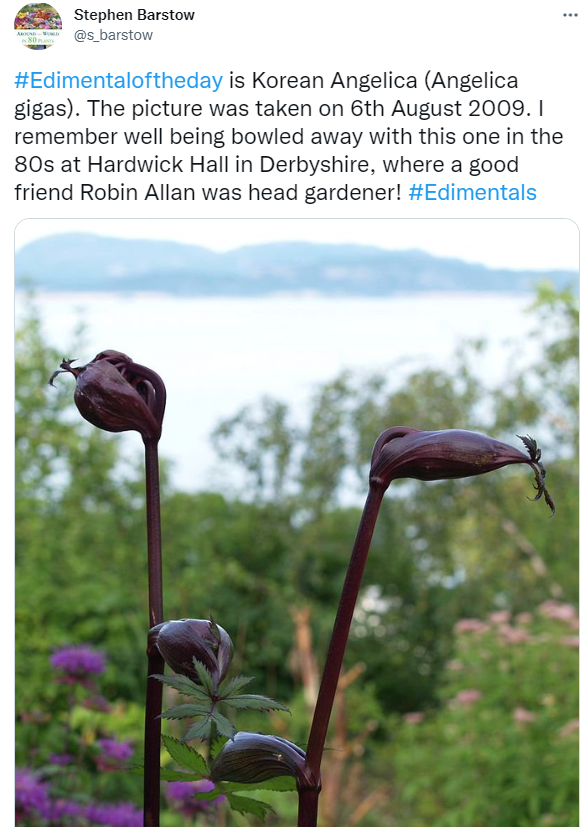
On the Korean wiki page, it simply states that “dangwi / dangquai’s petioles and tender stems are eaten raw or seasoned with herbs”. The root is also used medicinally along with Angelica acutiloba and Angelica sinensis.
You can find various instructional videos and recipes on Korean pages by searching
For example, the spring leaves and petioles are boiled and served with onions, garlic, sesame oil and sesame seeds.
As my plants were close to flowering (they darken quickly to deep red at this stage), I decided to go for using the flower stems in salad: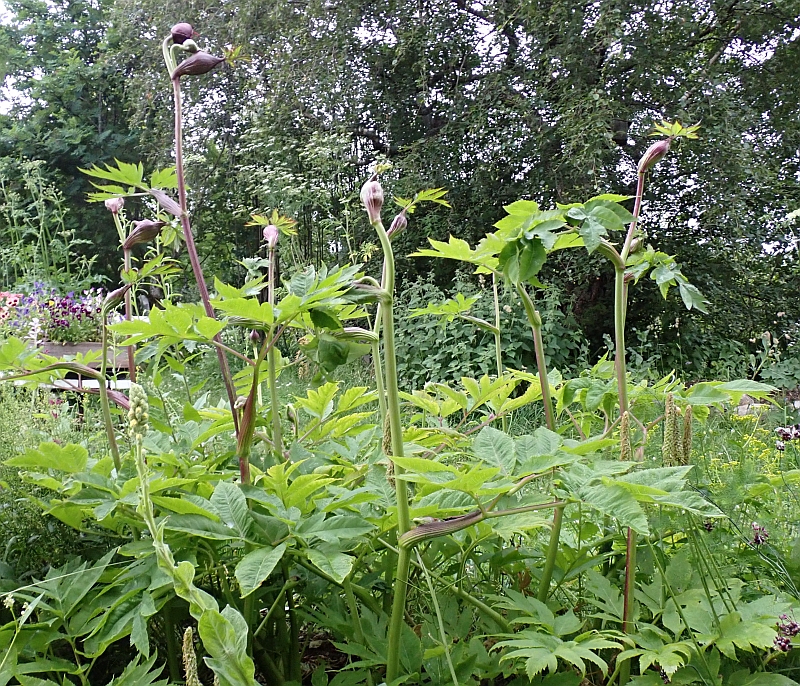 I first took one of the thicker flower stems…
I first took one of the thicker flower stems…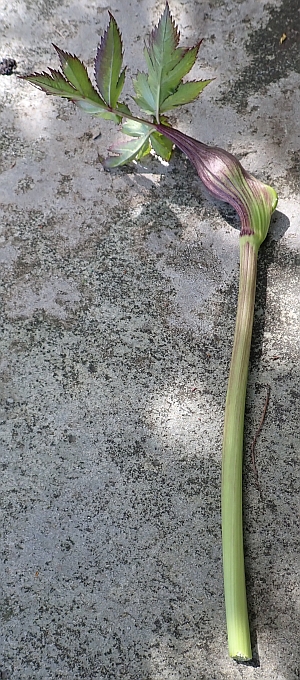 ….and sliced off a bit at the base for a taste! I was taken aback by how sweet it was (flower stems of Angelica archangelica were in the past considered to be candy by Norwegians). This reminded me of other plants that have surprisingly sweet flower stems: Scorzonera hispanica (scorzonera / scorsonnerot) and Arctium (burdock / borre). I assume that as plants like these approach flowering they produce less insect repellent chemicals and transfer their energy to producing flowers and seeds. For the salad, I peeled off the outer layer as it is fibrous and sliced it into the salad. Young seed pods of sea kale / strandkål were also available as were Scorzonera flower stems and buds.
….and sliced off a bit at the base for a taste! I was taken aback by how sweet it was (flower stems of Angelica archangelica were in the past considered to be candy by Norwegians). This reminded me of other plants that have surprisingly sweet flower stems: Scorzonera hispanica (scorzonera / scorsonnerot) and Arctium (burdock / borre). I assume that as plants like these approach flowering they produce less insect repellent chemicals and transfer their energy to producing flowers and seeds. For the salad, I peeled off the outer layer as it is fibrous and sliced it into the salad. Young seed pods of sea kale / strandkål were also available as were Scorzonera flower stems and buds.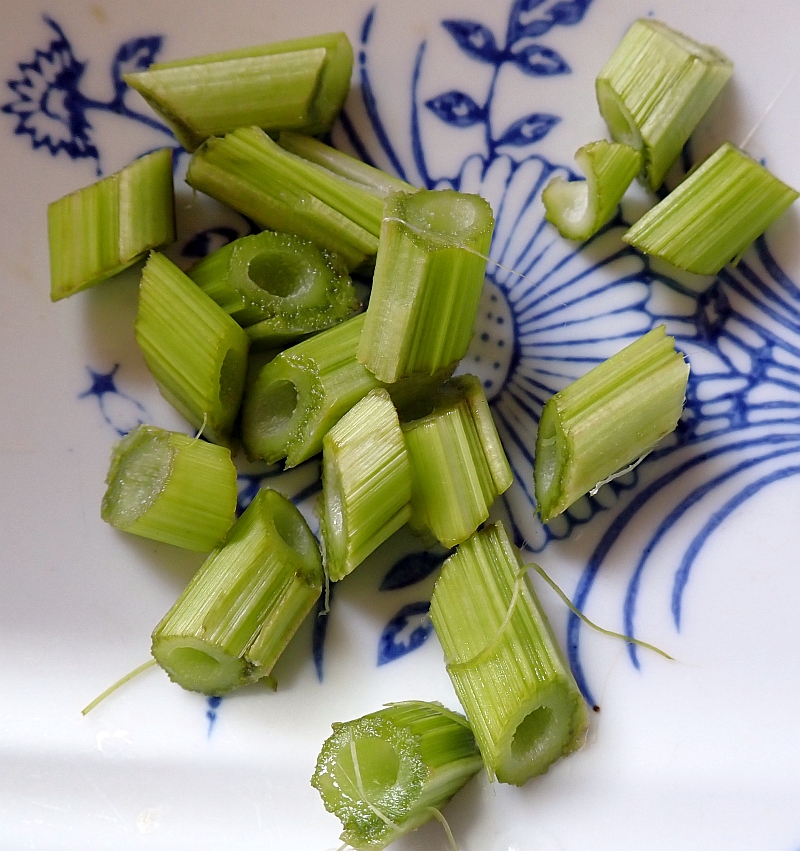

As with most Apiaceae, Angelica gigas is very popular with the pollinators, so this one definitely fits into the Edi-ento-mental category (delicious, ornamental and popular with the pollinators – what more could you wish of a plant!).
Unfortunately, like Angelica archangelica this species dies after flowering.
Cuckoo wasp in the garden!
I found the cuckoo wasp / rødgjøkveps in the garden today – Vespula austriaca. It parasitizes the red wasp / rødveps (Vespula rufa) by occupying its nest. V. rufa is uncommon in the garden, but I saw one today too. There are no workers of V. austriaca.
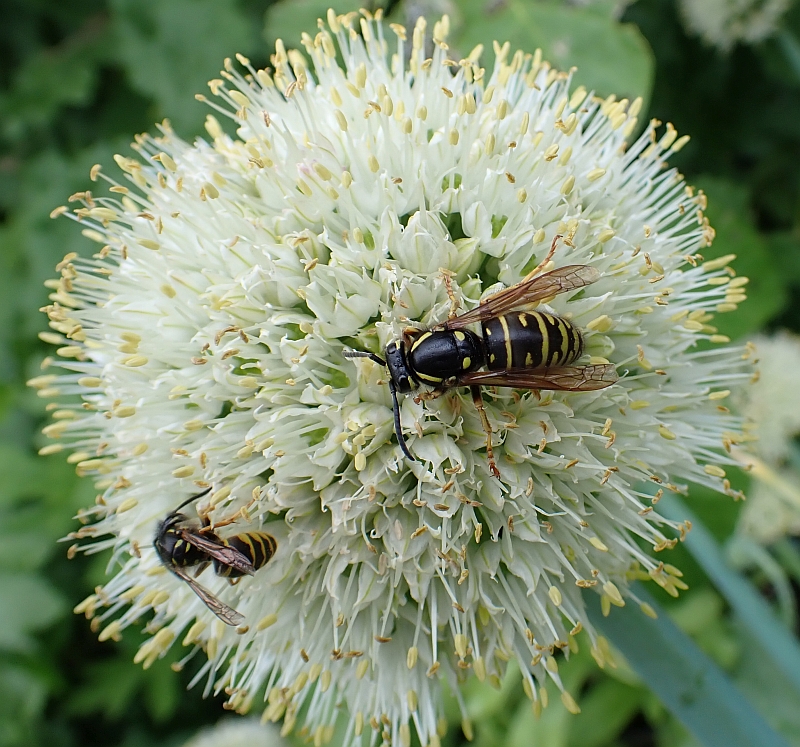


Burdock for goldfinches
I’ve written a series of articles in 3 parts “Fuglevennlige planter i hagen” (Bird friendly plants in the garden) for the magazine of our national bird society (NOF, now Birdlife Norge) called Vår Fuglefauna (Our Bird Fauna). The first part (6 pages) has already been published (the first two pages are shown below; deliberately blurred text (below).
My most successful plant (genus) supplying bird food in winter has been various species of burdock / borre (Arctium spp.). The oil rich seeds are very popular with goldfinches (stillits) and greenfinches (grønnfink). This autumn I cut a few plants growing in a different part of the garden and moved them in full view of my kitchen window which allowed me to film a flock of 11 goldfinches yesterday (see below). In the summer, the same plants are popular with various pollinators and for that reason also provide food for other insectivorous birds in summer.

The article will also be published for members of Norwegian Seed Savers’ guild for “Insect and Bird Friendly Plants” in a few months from now. This guild works focuses on plants that are beneficial for maintaining a garden rich in a diversity of insects and birds, whilst still providing food for us!
Admirals on Monarda
Monardas are autumn flowering here and one of the best plant genera for pollinating insects at this time of year, including bumble bees and butterflies. Over the last few days with relatively mild weather there have been at least 10 red admiral butterflies in the garden:


